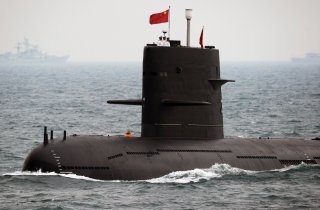Chinese Spy Ship Seen Sailing Off the Coast of Australia
The ship went to gather information about several sensitive coastal installations.
Australian military officials have announced that a People’s Liberation Army Navy spy vessel sailed very close to Australia’s west coast in order to gather information to “collect intelligence right along the coastline,” Defense Minister Peter Dutton said. “It has been in close proximity to military and intelligence installations on the west coast of Australia,” Dutton explained.
Dutton also stated that he considered the vessel’s actions an “aggressive act,” in particular because the ship had “come so far south.” Australia’s Defence Forces explained that the ship was a Dongdiao-class Auxiliary Intelligence ship called Haiwangxing. They released the following statement outlining the vessel’s movements:
Defence is aware of a People’s Liberation Army-Navy (PLA-N) Intelligence Collection Vessel operating off the north-west shelf of Australia.
Defence can confirm the vessel is a PLA-N, Dongdiao Class Auxiliary Intelligence ship named Haiwangxing.
The Haiwangxing travelled down the west coast of Australia to the vicinity of Exmouth, before changing course to track east along the north-west coast.
Defence is actively monitoring the current activities of the Chinese Intelligence Collection Vessel off the north-west coast of Western Australia with a combination of air and maritime capabilities.
Australia respects the right of all states to exercise freedom of navigation and overflight in international waters and airspace, just as we expect others to respect our right to do the same.
Defence will continue to monitor the ship’s operation in our maritime approaches.
The spy vessel’s route brought it reasonably close to the Naval Communication Station Harold E. Holt, a communications base that is operated jointly by American and Australian forces.
Still, the station probably assumes that it would be examined at some point and is prepared for prying eyes. The station broadcasts very low-frequency signals that are imperative for maintaining communications with the United States Navy, Royal Australian Navy, and other allied submarines sailing in parts of the Western Pacific Ocean and the eastern part of the Indian Ocean.
The ship’s course brought it into Australia’s Exclusive Economic Zone, a strip of ocean that stretches twelve to 200 nautical miles from the Australian coastline and is not off-limits for non-Australian ships.
The voyage could have tried to gather information on submarine communications due to the recent AUKUS agreement between Washington, London, and Canberra. The deal gives the Royal Australian Navy access to the crown jewels of the American and British nuclear triad: nuclear submarines. Extremely hard to detect and with a virtually unlimited range, the move to provide nuclear submarines to Canberra irked Beijing, which accused the United States and Great Britain of upsetting the balance of peace in the Pacific.
Caleb Larson is a multimedia journalist and defense writer with the National Interest. A graduate of UCLA, he also holds a Master of Public Policy and lives in Berlin. He covers the intersection of conflict, security, and technology, focusing on American foreign policy, European security, and German society for both print and radio. Follow him on Twitter @calebmlarson
Image: Reuters

